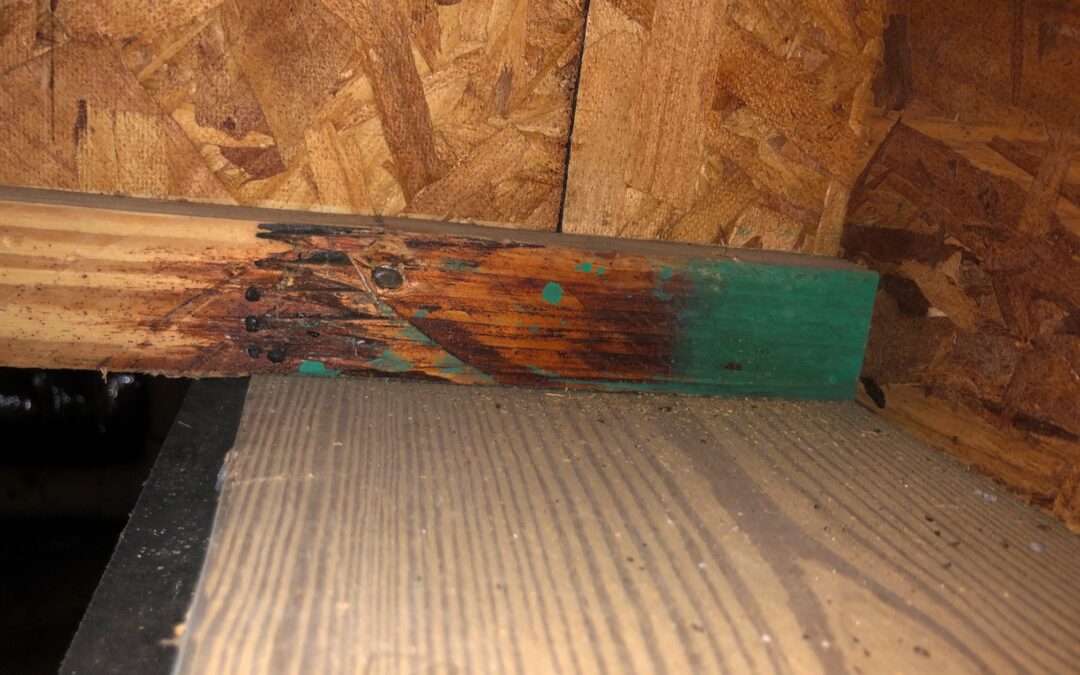Do You know about How To Repair Floor Joists With Water Damage? Floor joists are fundamental to the structural integrity of any building, whether residential or commercial. These wooden beams provide crucial support for floors, distributing weight and ensuring stability.
However, floor joists are vulnerable to water damage, which can occur due to flooding, plumbing leaks, or high humidity. When water seeps into these beams, it can compromise their strength and lead to significant structural issues. If left untreated, damaged floor joists can cause uneven floors, sagging, and even more severe problems like structural collapse.
This article provides a comprehensive guide on identifying, assessing, and repairing water-damaged floor joists to restore your building’s safety and integrity.
Repairing water damaged floor joists involves identifying the damage, removing compromised wood, and reinforcing or replacing the joists to restore structural integrity.
Identifying Water Damaged Floor Joists
Signs of Damage: Identifying water damage in floor joists is crucial for preventing further structural problems. Look for these telltale signs:
- Uneven or Sagging Floors: One of the most noticeable signs of compromised floor joists is uneven or sagging floors. This can be felt as a dip or bounce when walking across the surface.
- Cracked Doors or Windows: Water damage can cause the joists to warp, leading to misalignment of doors and windows, making them difficult to open or close.
- Mold or Mildew: The presence of mold or mildew near the floor is a strong indicator of moisture problems. This can be accompanied by a musty odor.
- Visible Discoloration or Rot: Darkened or blackened wood, often soft to the touch, indicates rot. This decay weakens the joists and compromises their ability to support weight.
Types of Rot: Understanding the type of rot affecting the floor joists is essential for determining the appropriate repair method.
- Wet Rot: Wet rot occurs when wood remains damp for extended periods, leading to a soft, spongy texture and dark brown coloration. This type of rot can spread rapidly, especially in consistently wet conditions.
- Dry Rot: Unlike wet rot, dry rot is slower to develop but can be equally destructive. It thrives in damp, poorly ventilated areas and is characterized by a brittle texture and white or grey fungal growth. Dry rot can spread through wood, masonry, and plaster, making it a significant concern for structural integrity.
Common Causes of Water Damage to Floor Joists
Plumbing Leaks and Flooding: Plumbing issues, such as leaks from pipes or fixtures, are common culprits of water damage in floor joists. When water escapes from these systems, it can seep into the surrounding wood, leading to rot and decay. Similarly, flooding, whether due to natural disasters or internal issues like an overflowing appliance, can cause substantial water damage if not promptly addressed.
High Humidity and Condensation: In areas with poor ventilation, such as basements and crawl spaces, humidity levels can rise, leading to condensation on surfaces, including floor joists. This moisture accumulation can encourage the growth of mold and mildew, weakening the wood over time.
Foundation Issues: Water infiltration through cracks in the foundation or around the building’s perimeter can lead to moisture accumulation in the basement or crawl space. This moisture can eventually reach the floor joists, causing them to rot. Older homes with stone or brick foundations are particularly susceptible to this type of damage.
Steps to Repair Water-Damaged Floor Joists
Assessing the Damage: Before undertaking any repairs, it’s essential to accurately assess the extent of the damage. This may involve removing sections of flooring or ceiling to access the joists and using tools like moisture meters to gauge the level of moisture content. It’s important to determine whether the damage is localized or widespread, as this will influence the repair strategy.
Preventing Further Water Infiltration: Addressing the source of the moisture is crucial to prevent future damage. This might involve repairing plumbing leaks, improving drainage around the foundation, or installing dehumidifiers to manage humidity levels. Ensuring that these issues are resolved will protect the repaired or replaced joists from further water exposure.
Repair Methods Floor Joists With Water Damage
- Sistering Joists:
- Description: Sistering involves attaching a new joist alongside the damaged one to provide additional support. This method is effective for joists that are partially compromised but still retain some structural integrity.
- Procedure: Cut a new joist to match the length of the existing one, ensuring it overlaps healthy wood on either side of the damaged area. Secure the new joist using heavy-duty bolts, nails, or construction adhesive.
- Replacing Joists:
- Description: In cases where the damage is extensive, replacing the joist entirely may be necessary. This is particularly true if the joist has lost significant strength or is beyond repair.
- Procedure: Remove the damaged joist by cutting it out and carefully extracting it from the surrounding structure. Install a new joist of the same size and type, ensuring it is securely fastened and properly aligned with the existing structure.
- Using a Heavy-Duty Floor Jack:
- Description: For areas where joists have sagged or deformed, using a floor jack can help lift the structure back to its original level.
- Procedure: Place the floor jack under the damaged area and slowly raise it, being careful not to overextend and cause further damage. Once the joist is level, install additional supports, such as new girders or supplemental beams, to reinforce the structure.
Conclusion
Repairing water-damaged floor joists is a critical task that requires careful assessment and proper technique. Whether you opt for sistering, replacing, or using floor jacks, addressing the underlying moisture issues is essential to prevent future problems. For those unsure about undertaking these repairs themselves, professional assistance is recommended to ensure the job is done correctly and safely. For comprehensive support, consider consulting a water damage restoration service to restore your building’s structural integrity.
Frequently Asked Questions How To Repair Floor Joists With Water Damage
Do wet floor joists need to be replaced?
Wet floor joists do not always need to be replaced. If the damage is minor and localized, repairing the joists with methods like sistering may be sufficient. However, if the joists are extensively rotted or compromised, replacement is the safer option to ensure the structure’s stability.
How much does it cost to repair a water-damaged floor joist?
The cost to repair water-damaged floor joists can vary widely, ranging from $1,000 to $20,000, depending on the extent of the damage, the size of the affected area, and the materials used. Factors such as accessibility and the need for additional repairs (e.g., plumbing or foundation work) can also impact the overall cost.
How do you treat water-damaged joists?
Treating water-damaged joists involves removing the source of moisture, drying out the affected area, and using antifungal treatments to prevent mold growth. In cases of minor damage, repairs may include sanding, reinforcing, or sistering the joists. For more severe damage, replacement may be necessary.
Can wood with water damage be repaired?
Yes, wood with water damage can often be repaired, especially if the damage is caught early. Techniques like sanding, sealing, and reinforcing can restore the wood’s structural integrity. However, in cases of extensive rot or severe structural compromise, replacement may be the best solution.
By following these guidelines, you can effectively address water damage in floor joists and ensure the long-term safety and stability of your building. If you require expert assistance, don’t hesitate to contact a professional water damage restoration service.

